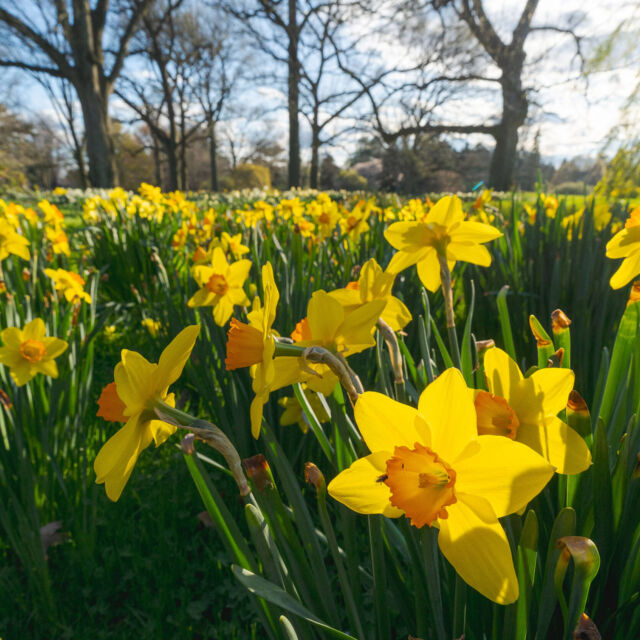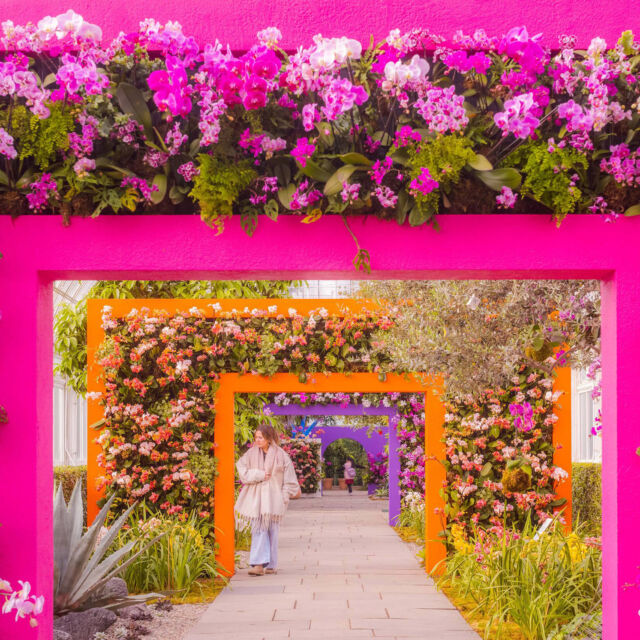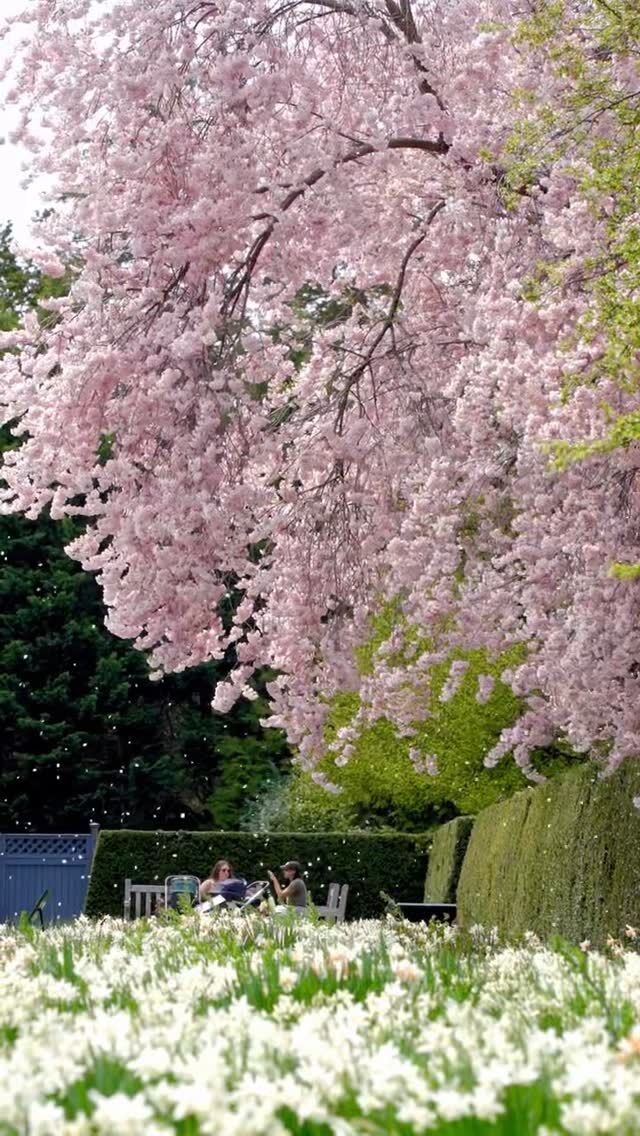The Plant Doctor: A Year in Review

Louise, one of our question askers, succeeded in bringing her wisteria back to gorgeous, healthy blooms and foliage with help from the Plant Docs.
Suffice it to say, our recent time in quarantine has afforded us all more time to become closer to nature, and appreciate its countless splendors. If you have not become a proud new plant parent in the last year, or increasingly concerned with how to best tend to your maturing plant “children,” I’m certain you can name at least three friends who have.
Plant cutting swaps, express delivery services and local supermarkets have made it possible to access the most sought-after plant varieties. With this, many have discovered that their beloved household greenery requires more tender love and care than initially expected in order to thrive, especially while indoors.
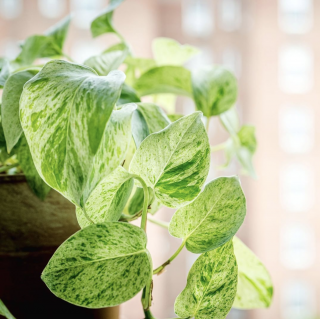
Pothos (Epipremnum ‘Marble Queen’ seen here), being beautiful and easy to grow plants in even the most challenging apartment situations, were a deservedly popular plant among our question askers.
In response, nearly each week since March 2020, The New York Botanical Garden has been sharing five simple words that became music to our followers’ ears: “The Plant Doc is in!” Our horticultural experts rose to the occasion across Facebook, Twitter, and Instagram by inviting our supporters to share their various plant care challenges with the intent of turning their botanical woes into wins. Since then, we’ve responded to more than 1,500 questions over the past 47 weeks and counting, saving vegetables, shrubs, and flowers alike.
So, you might ask, “Who are the Plant Docs, and how are they so knowledgeable?”
As a world-leading educational institution and plant research organization in the Bronx, NYBG is home to plant experts across a variety of disciplines, but the plant questions received via social media are specifically reviewed, researched, and answered by a dynamic duo of plant information gurus on the Garden’s LuEsther L. Mertz Library Team. Each week, Leslie Coleman, Library Assistant in Plant Information, and Anita Finkle-Guerrero, Assistant Plant Information Specialist, delve into their wealth of plant care insight to ensure even the most finicky plants make sense to their owners.
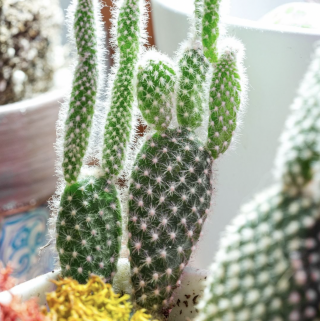
Cacti (this is Opuntia microdasys) in city apartments often faced challenges in the amount of direct sunlight they needed to thrive. The Plant Docs were on the case.
NYBG’s followers often share their feedback and appreciation for Leslie and Anita’s thorough responses by providing updates about their plant breakthroughs and recoveries.
Several trending plant care topics have surfaced over the past year, including common challenges to houseplants shared among our question askers, understandable mistakes, and notoriously difficult species. We’ve also had some unique submissions come through!
⦁ Fungus gnats have proven themselves the most annoying plant pest by far. This tiny nuisance can be conquered by removing any runoff water from your potted plants, keeping their surface soil dry, and using sticky traps for indoor plants.
⦁ What was the oldest plant in need of the Plant Doc’s help? A 70-year-old Christmas cactus passed down from grandmother to granddaughter that required a larger pot to make room for its sprawling roots.
⦁ What’s been the most perplexing plant for NYBG’s followers to keep healthy? The often fussy fiddle leaf fig (Ficus lyrata)—despite being both beautiful and hugely popular among indoor collections—many times defies the well-meaning care of its owners with weekly headaches.
⦁ The most puzzling plant stumbling block among plant lovers has been how to mimic tropical species’ warm native environments. This is often solved by increasing humidity, adjusting sun exposure, and misting frequently.
⦁ What’s the top houseplant mistake? Using beautiful plant containers without drainage holes, which risk oversaturating the soil and potential root rot.
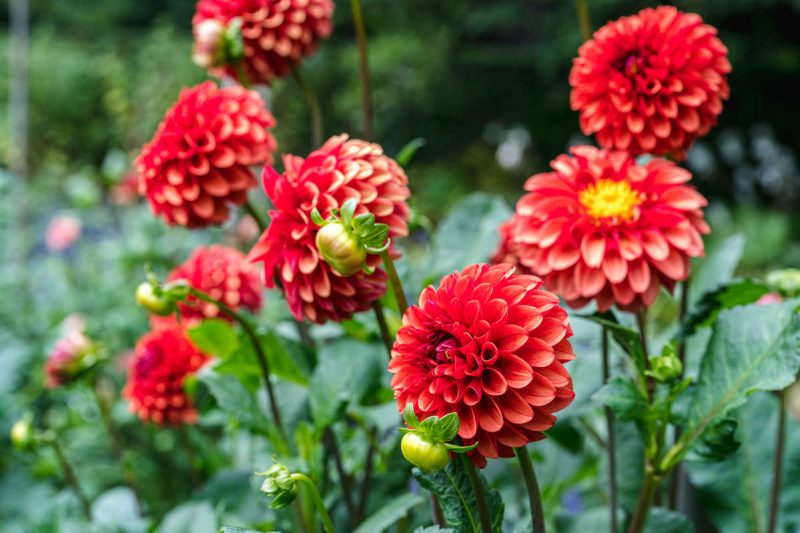
From flowering favorites like Dahlia ‘Brown Sugar’ to vegetable gardens and even trees, outdoor plants were also popular topics of discussion for the Plant Docs.
But you don’t need to wait for Mondays to get answers to your questions. We also encourage you to seek the Plant Docs’ assistance by e-mail! The Plant Information Team is always accessible directly by reaching out to PlantInfo@nybg.org, where anyone can send photos and accompanying details about a plant’s current care routine to help identify where the problem may lie. Additionally, the Gardens page at nybg.org is full of information about our outdoor and indoor collections, along with the “Ask a Plant Expert” section that leads to numerous Lib Guides, all listed alphabetically by gardening subject. The Gardening Help, Houseplant Help, and Orchid Help web pages receive thousands of visitors each year, so it’s quite possible that the answer to your question is already available online.
We’ll see you in the comments, and here’s to long and happy lives for all of the plants in your jungalow!
SUBSCRIBE
Enter your email address to subscribe to this blog and receive updates on new posts.
